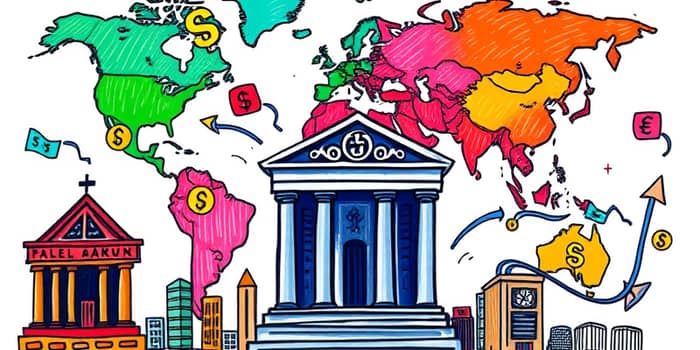
In 2025, foreign exchange markets have emerged as living barometers of government rhetoric and central bank communication. Each policy statement, whether a brief remark at a press conference or a dense economic report, can shuttle billions of dollars in and out of the world’s major currencies in a matter of minutes. For participants, mastering this landscape means learning to read not just data, but carefully crafted language that carries hidden signals.
Currency traders worldwide have learned a vital lesson: even a subtle shift in language can spark dramatic fluctuations in exchange rates. A single sentence about future rate expectations or directional guidance can trigger split-second adjustments in all major pairs, reshaping portfolio valuations overnight. The Federal Reserve’s phraseology, for example, has become so influential that economists now dissect every comma for clues.
Consider the market reaction to the Fed’s January projection, which trimmed expected rate cuts from six to one. Rates futures surged, sending the US dollar sharply higher against all peers. In that moment, a trader with the right interpretation could secure significant gains before others reacted.
During periods of uncertainty, FX volumes can surge as investors scramble to hedge positions or reposition bets. Market participants rely on in-depth analysis of policy pronouncements to anticipate moves. This environment demands constant vigilance, but also presents unique opportunities for those ready to act.
The United States remains at the epicenter of global FX volatility. Following President Trump’s second inauguration, markets initially priced in more than six Fed rate cuts, only to scale back to a single reduction after inflation data proved stronger than expected. The US dollar responded with a swift appreciation of over 6%, underscoring how expectations of pro-growth policy measures and rate decisions can combine to reshape global capital flows.
Meanwhile, trade policy announcements have gained similar prominence. Though the administration did not impose widespread new tariffs immediately, the mere discussion of “destructive” trade practices unsettled markets. When US officials highlighted that American MFN tariffs average 3.3% compared to partners—India at 17%, Brazil at 11.2%, and the EU at 5%—currencies such as the Australian dollar and euro experienced volatile swings against the greenback.
For many firms, these policy shifts carry real economic implications. Export-reliant businesses track tariff threat levels as diligently as they watch sales figures. A sudden hint at reciprocal tariffs can force producers to reprice goods, hedge currency risk, or delay investment decisions, all of which feed back into broader growth expectations.
Major currency pairs each tell a unique story in response to policy statements:
In Asia, FX markets confront a dual headwind: tighter US monetary conditions and the looming threat of increased American tariffs. China’s central bank has publicly emphasized that currency stability is its top policy goal, deploying reserves and targeted quotes to anchor the yuan. Despite these efforts, currencies like the Korean won and Pakistani rupee remain vulnerable, given their high exposure to export cycles and external debt.
On the other side, Southeast Asian currencies such as the Indonesian rupiah have shown relative resilience, benefiting from diversified export bases and proactive central bank interventions. Market participants glean insights from every PBOC announcement, as Beijing balances growth support against depreciation pressures.
Meanwhile, Europe’s FX landscape is shaped by the ECB’s aggressive tightening campaign, which successfully quelled inflation but slowed growth. Core economies grappled with political turbulence—French budget debates and German coalition negotiations introduced fresh volatility. Each statement from ECB President Lagarde, from rate projections to balance-sheet commentary, can swing the euro by hundreds of pips.
Investors must integrate these regional nuances, recognizing that a policy shift in Frankfurt or Tokyo can ripple through portfolios just as forcefully as a Fed decision.
Amid this whirlwind of announcements, a clear strategy can differentiate between seizing opportunities and succumbing to volatility. Consider these practical tactics:
Several events stand out on the horizon as potential FX market catalysts:
Policy communication now moves markets more than ever, turning every speech and report into potential profit—or peril. Traders who master the art of interpreting nuance can transform these moments of uncertainty into opportunities for meaningful gains.
Developing a structured plan, leveraging hedging tools, and maintaining agility in portfolio adjustments will empower investors to navigate the twists and turns of 2025’s FX landscape. Ultimately, the most successful market participants will be those who listen intently, prepare meticulously, and execute swiftly when the next policy announcement reshapes the game.
References













